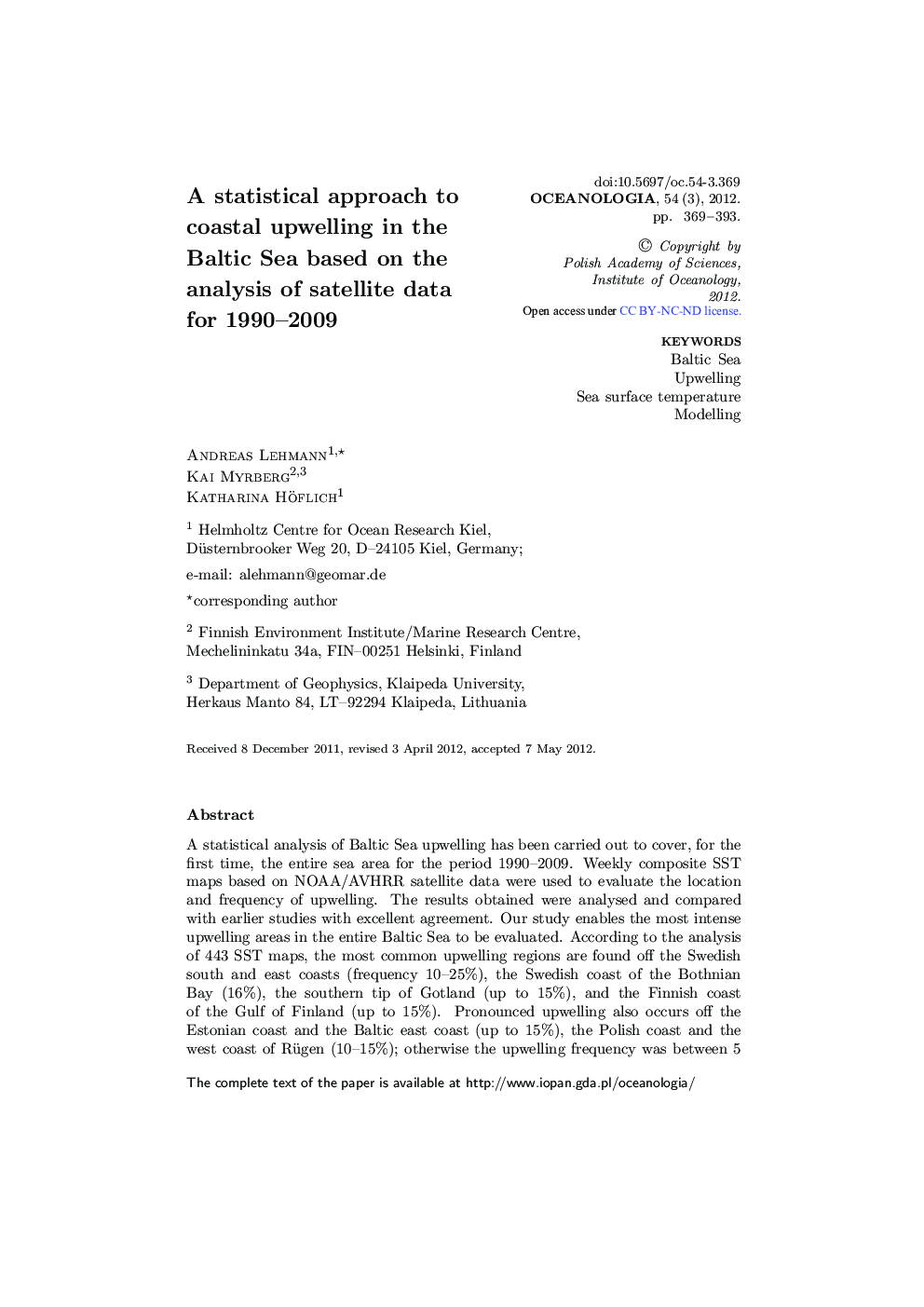| Article ID | Journal | Published Year | Pages | File Type |
|---|---|---|---|---|
| 2069884 | Oceanologia | 2012 | 25 Pages |
A statistical analysis of Baltic Sea upwelling has been carried out to cover, for the first time, the entire sea area for the period 1990–2009. Weekly composite SST maps based on NOAA/AVHRR satellite data were used to evaluate the location and frequency of upwelling. The results obtained were analysed and compared with earlier studies with excellent agreement. Our study enables the most intense upwelling areas in the entire Baltic Sea to be evaluated. According to the analysis of 443 SST maps, the most common upwelling regions are found off the Swedish south and east coasts (frequency 10–25%), the Swedish coast of the Bothnian Bay (16%), the southern tip of Gotland (up to 15%), and the Finnish coast of the Gulf of Finland (up to 15%). Pronounced upwelling also occurs off the Estonian coast and the Baltic east coast (up to 15%), the Polish coast and the west coast of Rügen (10–15%); otherwise the upwelling frequency was between 5 and 10%. Additionally, simulated SST distributions derived from a Baltic Sea numerical model were analysed for the same period. Furthermore, at specific positions close to the coastline, surface winds based on the SMHI meteorological data base were analysed for the same 20-year period. Wind components parallel to the coast were discriminated into favourable and unfavourable winds forcing upwelling. The obtained frequencies of upwelling-favourable winds fit very well the observed upwelling frequencies derived from satellite SST maps. A positive trend of upwelling frequencies along the Swedish east coast and the Finnish coast of the Gulf of Finland was calculated for the period 1990–2009.
